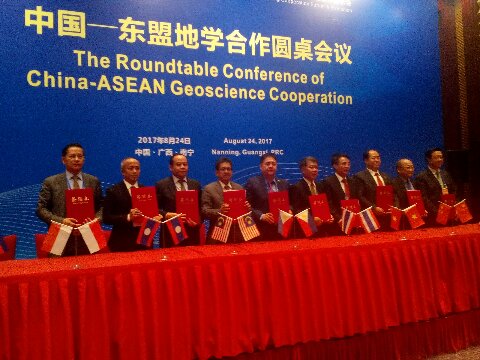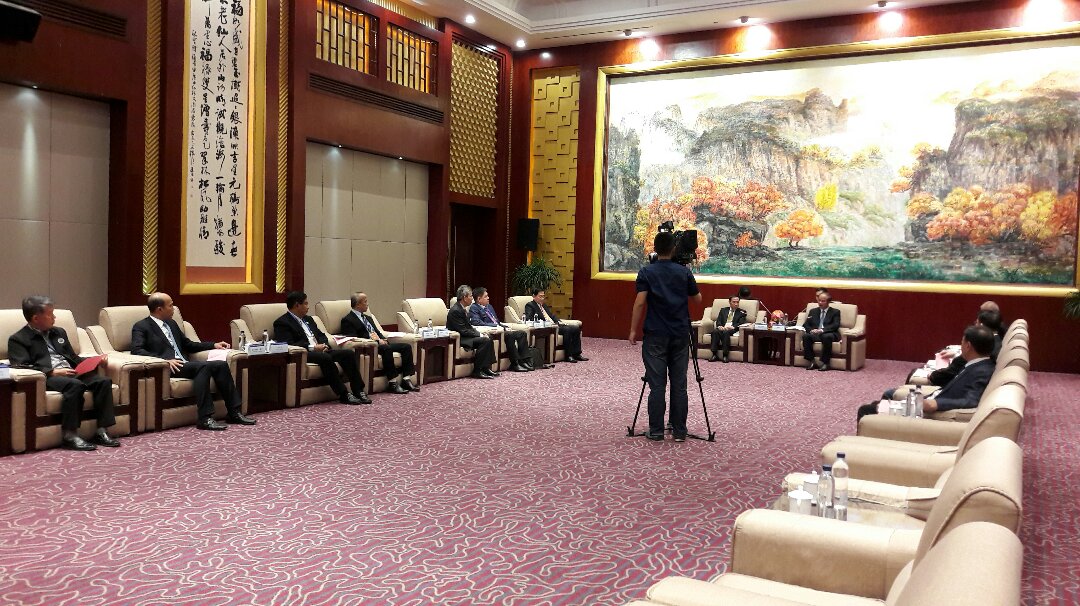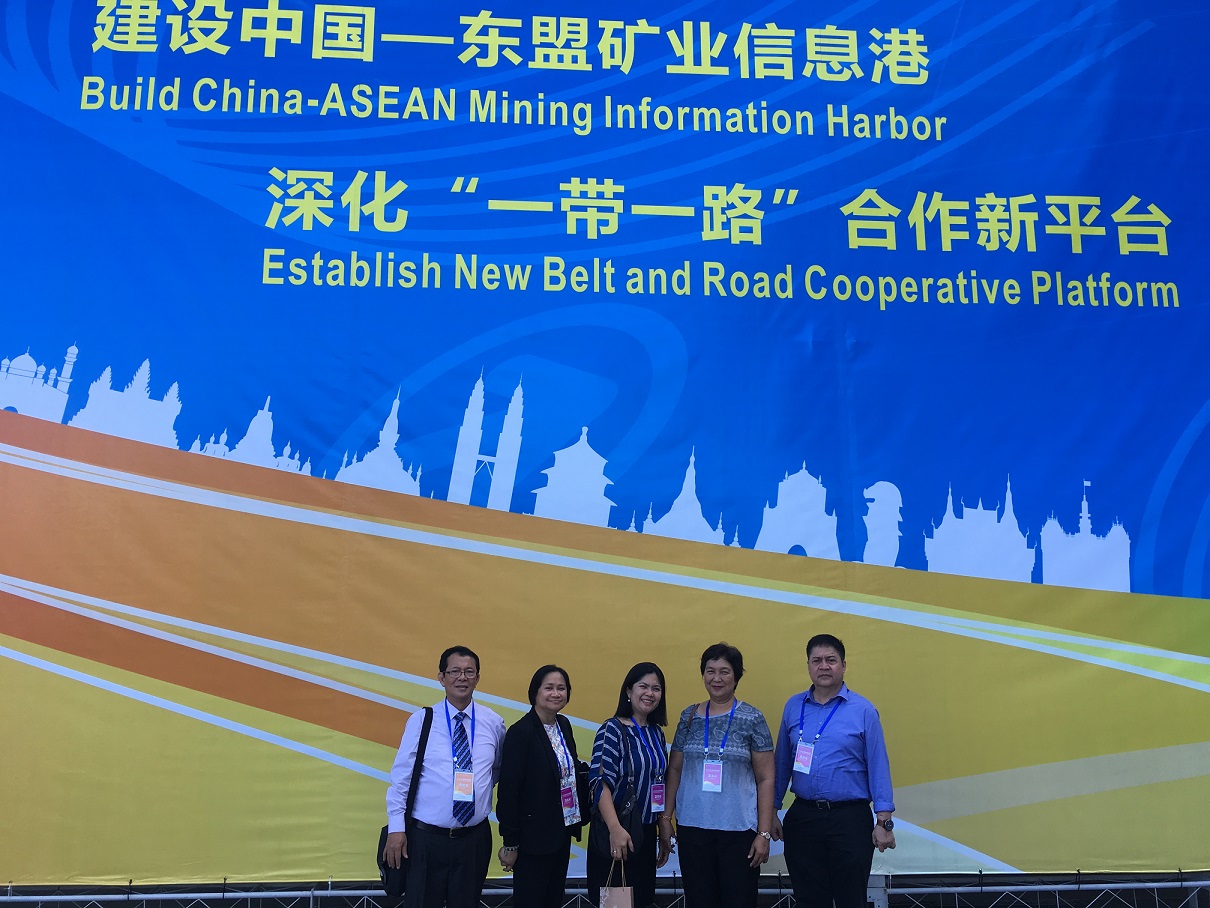The Philippine government is looking into pursuing long-term and stable environmental policies focusing on the country’s proper utilization of mineral deposits and responsible mining.
In his opening speech during a 3-day international conference, Mines and Geosciences Bureau (MGB) Director Wilfredo Moncano said that the country has to move forward by strictly implementing responsible mining and that mining projects should be technically feasible, environmentally compliant, socially acceptable and financially viable.
“Any of these imperatives absent, it is not the time to mine. Our President Rodrigo Duterte is serious in having all hands onboard so that the mining industry can productively contribute in the total effort of seeing the country march to meaning progress and development,” Moncano said.
In this regard, the government will focus on policies on minerals and metals-led industrialization initiatives; streamlining of mining application procedures; MGB-led inter-agency coordination of regulatory agencies in mining projects; strong community relations programs; and final land use options of mineral lands.
The government will ensure continued availability and security of materials and commodities and minimize risks to the economic growth by planning and establishing a robust mine-to-metal value chain; revisit regulatory and compliance policies as regards mining and processing of metallic minerals; conduct an inventory and further exploration studies, in necessary, of the various natural resources in the country especially the magnetite sand deposits, coal, limestone, nickel, chromite etc.; identify and determine mineral resources and its potentials; and craft laws to mandate operating mines to set-up their mineral processing plants in the country and discourage exports of raw ore.
To encourage more investors, the MGB will clarify its policy issuances, cut down the list of requirements and documents and institutionalize the mining application process.
The MGB shall closely coordinate with other regulatory agencies such as the Environmental Management Bureau, Biodiversity Management Bureau and the National Commission on Indigenous Peoples in the approval of mining projects.
The government will address legitimate concerns, provide proper information, share perspectives of development options and ensure that mining host communities are involved in the decision-making and environmental protection and enhancement programs. On the side of the mining industry, the government will encourage them to work well and partner with the communities and engage them from the first day of the mining work to develop a sense of ownership over the mine and understand its importance in the development of the community.
The government wants to have the most suitable and sustainable final land use, thus it would ensure that options will be thoroughly consulted and collaborated with the local government units, communities and other stakeholders.
The MGB will also continue to generate and share geologic and mineral resource information with the industry and that geohazard, groundwater resources, geology and mineral potential activities will be continuously undertaken.
Meanwhile, Director Moncano proposed for several developments in which the China-ASEAN Geosciences Cooperation could help.
During the China-ASEAN Geosciences Cooperation Roundtable Conference, last August 24, Moncano proposed for the exploration of Rare Earth Elements (REE) in the Philippines.
Currently, there are no known REE deposits in the country. However, there are geological bases that show that REE could also be found in some “unique or special setting on mineral association.” “China, being the recognized leading producer of the world's rare earth supply, is in the best position to share its expertise in REE exploration with the ASEAN countries,” Moncano stated.
Moncano also proposed for the development of offshore mineral exploration technologies since all offshore areas within territorial jurisdiction of the Philippines is considered as mineral reservations. No development is happening yet which can be attributed to the country’s lack of capability to apply offshore mineral exploration technologies.
Lastly, Moncano proposed a development of processing technologies for the extraction of iron from iron laterites in the country.
“We hope that this proposal put forward by our country can find support from the China-ASEAN Geoscience Cooperation Center to build up and level up geoscientific cooperation and exchange and sharing,” Moncano said in his closing statement.
The Bureau took part in the 8th China-ASEAN Mining Cooperation Forum and Exhibition and China-ASEAN New Mining Technology, Mining Machinery and Gems Expo held at the Nanning International Convention and Exhibition Center in Nanning, Guangxi, China last August 24 – 26.
The event, with the theme “Building a China-ASEAN Mining Information Harbor – Establishing a New ‘One-Belt, One Road,’ Cooperative Platform,” was organized by People’s Government of Guangxi Zhuang Autonomous Region Ministry of Land Resources of the People’s Republic of China.
During the event, the MGB information officers manned the booth where MGB profile and programs were showcased.
The exhibit also showcased the best practices in mining at the Rio Tuba Operations in Bataraza, Palawan, Philippines.
By: Mineral Economics, Information and Publications Division

Taken during treaty signing on cooperation among ASEAN member countries as represented by MGB Director Moncano (5th from the left)
 MGB Director Moncano (6th from left) during a meeting with the Governor of Nanning, Guangxi, China
MGB Director Moncano (6th from left) during a meeting with the Governor of Nanning, Guangxi, China
 (L-R) Mr Ventutimo Masindo, Administrative Manager of RTNMC, MEIPD staff Ms. Marjorie Martinez and Ms. Venus Sarmiento , Ms. Liz Cherry Solijon, Officer-in-charge, MEIPD, and MGB Director Wilfredo Moncano.
(L-R) Mr Ventutimo Masindo, Administrative Manager of RTNMC, MEIPD staff Ms. Marjorie Martinez and Ms. Venus Sarmiento , Ms. Liz Cherry Solijon, Officer-in-charge, MEIPD, and MGB Director Wilfredo Moncano.
 MGB MEIPD staff manning the booth.
MGB MEIPD staff manning the booth.
